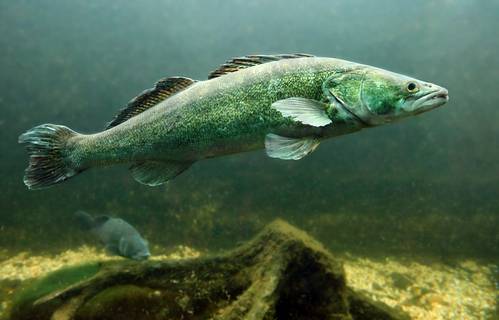Scientists have tracked fish off New York by following the traces of DNA left in the water, a technique that could help gauge life in rivers, lakes and the oceans around the world, a study showed on Wednesday.
Fish leave bits of slimy skin, scales and excretions as they swim around - clues that let scientists detect 42 different species of fish including herring, bass and eels in water drawn from the Hudson and East Rivers off Manhattan, it said.
"Rather than get a big boat and a big net ... we just tied a bucket onto a rope and threw it into the river," lead author Mark Stoeckle, from New York's Rockefeller University, told Reuters.
The one-litre (two-pint) samples, costing $50 to process, let scientists monitor annual migrations of fish in spring 2016 to the rivers and their estuaries, according to the study published in the journal PLOS One.
It said it was the first time fish migrations had been tracked solely by DNA.
Understanding fish migrations can help countries time the opening of fishing grounds and other activities. In New York, for instance, the port authority is banned from dredging when winter flounder are in the area.
By contrast with DNA studies, research vessels using nets to catch fish to study the variety in an area can cost $10,000 a day. Sonars can also be used to spot shoals but are less precise in detecting individual species.
"And the animals may be chased away by the sound of the vessel, or the pressure of the bow wave," said Jesse Ausubel, a co-author at the Rockefeller University.
"DNA is opening up the world around us ... we can read the book of nature just by collecting a cup of water," he told Reuters.
DNA finprinting of fish is similar to genetic fingerprinting of people, for medical tests or in forensics at crime scenes.
Still, some of the results seemed puzzling.
The study found DNA from exotic Nile tilapia and red snapper that do not live off New York. That DNA apparently came from sewers after passing through humans who ate the fish.
And it is impossible to know if DNA samples came from one fish or 10. Greater sensitivity could pave the way to gauge fish stocks in the oceans.
Fish DNA lasts perhaps a week in the water before breaking down in what the scientists called a "Goldilocks" time. Longer would make it impossible to tell how long the fish had been there, shorter would make it hard to find any trace of life.
DNA has widening uses for tracking wildlife. A 2008 study measured wetlands in France to detect American bullfrogs, a species that was damaging local wildlife after escaping from farms producing frogs' legs, a local delicacy.
(Reporting By Alister Doyle; Editing by Andrew Heavens)
• 
















 February 2024
February 2024



